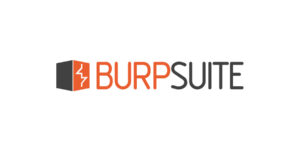In the dynamic realm of software testing, the significance of dependable testing tools cannot be emphasized enough. This blog post undertakes an in-depth exploration, conducting a thorough comparison between two prominent contenders in the field: Burp Suite and OWASP. The ultimate objective here is to furnish professionals with invaluable insights, facilitating their decision-making process when it comes to selecting the most suitable tool to address their unique testing requirements. This analysis aims to shed light on the distinguishing features, capabilities, and advantages of both Burp Suite and OWASP, thereby assisting individuals in making an informed choice that aligns precisely with their specific testing needs.
Burp Suite:
Burp Suite, developed by PortSwigger, stands as a well-established web vulnerability scanner and security testing tool. It offers a range of editions, from a free community version to a comprehensive professional edition, catering to diverse user requirements.

Features of Burp Suite:
|
Criteria |
Features |
|
Scanning Capabilities |
Burp Suite is renowned for its robust scanning capabilities, including automated and manual scanning options. It can detect a wide range of vulnerabilities, such as SQL injection, cross-site scripting (XSS), and more. |
|
Proxy and Intercept |
The tool provides an intercepting proxy that allows users to intercept and modify HTTP requests and responses, making it invaluable for manual testing and debugging. |
|
Extensibility |
Burp Suite supports extensions and integrations, enabling users to enhance its functionality with custom scripts and add-ons. |
|
User-Friendly Interface |
The intuitive user interface of Burp Suite makes it accessible to both beginners and experienced testing professionals. |
OWASP:
The Open Web Application Security Project (OWASP) is a nonprofit organization committed to enhancing software security. It provides a plethora of resources, including guidelines, documentation, and tools, aimed at fortifying web application security.

OWASP Tools and Projects:
| Criteria |
Features |
|
OWASP Top Ten |
OWASP’s flagship project, the OWASP Top Ten, identifies and educates users about the most critical web application security risks. |
|
ZAP (OWASP Zed Attack Proxy) |
ZAP is an open-source web application security scanner that is part of the OWASP project. It provides automated scanners and various tools for manual testing. |
|
Cheat Sheets and Guides |
OWASP offers a plethora of cheat sheets, guides, and best practice documents that help developers and testing professionals mitigate common web application vulnerabilities. |
Comparison:
Now, let’s dive into a detailed comparison of Burp Suite and OWASP:
- Vulnerability Detection:
- Burp Suite: Offers comprehensive vulnerability detection.
- OWASP: Provides guidance on identifying and mitigating vulnerabilities.
- Ease of Use:
- Burp Suite: Known for its user-friendly interface.
- OWASP: Offers a diverse set of tools and guides for various user levels.
- Cost:
- Burp Suite: Offers both free and paid versions.
- OWASP: Embraces an open-source model, making its resources freely accessible.
- Extensibility:
- Burp Suite: Supports extensions, enabling customization.
- OWASP: Offers plugin support for enhancing functionality.
- Community Support:
- Burp Suite: Benefits from a strong user community.
- OWASP: Fosters a collaborative and open-source community.
Conclusion:
The choice between Burp Suite and OWASP hinges on your specific requirements. Burp Suite excels in vulnerability detection and boasts an intuitive interface, making it a preferred choice for many testing professionals. Conversely, OWASP takes a collaborative and open-source approach, providing an extensive array of resources and tools.
Ultimately, your decision should align with your project’s unique demands and your familiarity with these tools. By staying informed and leveraging the strengths of Burp Suite and OWASP, you can effectively fortify your web applications against potential threats.


Thank you for sharing good information.